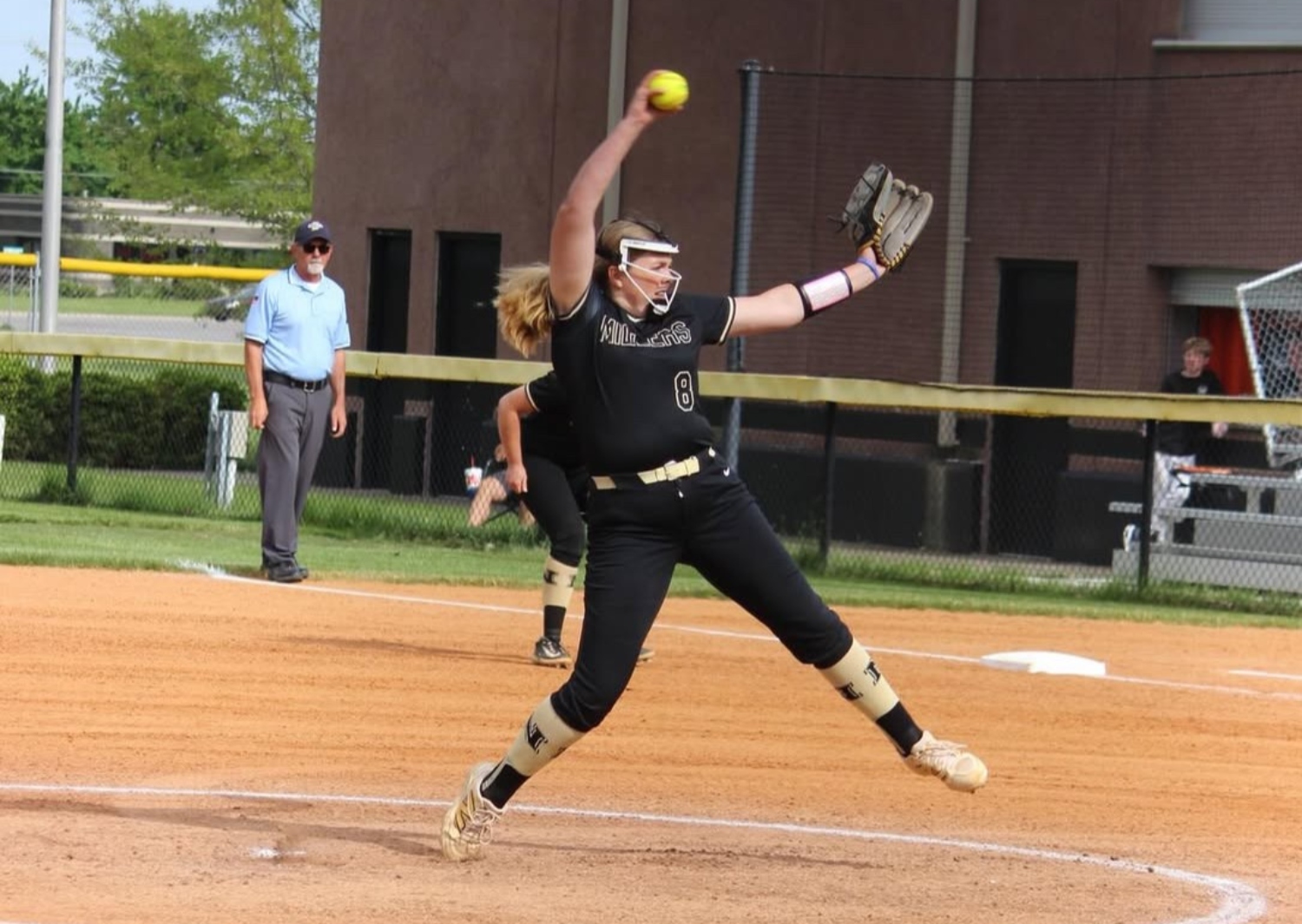Line Drive HOT 100 Player Rankings: Everything You Need to Know (Including the 3 Main Reasons They’re Compiled)
By Brentt Eads
September 5, 2024
Line Drive HOT 100 Player Rankings: Everything You Need to Know (Including the 3 Main Reasons They’re Compiled)
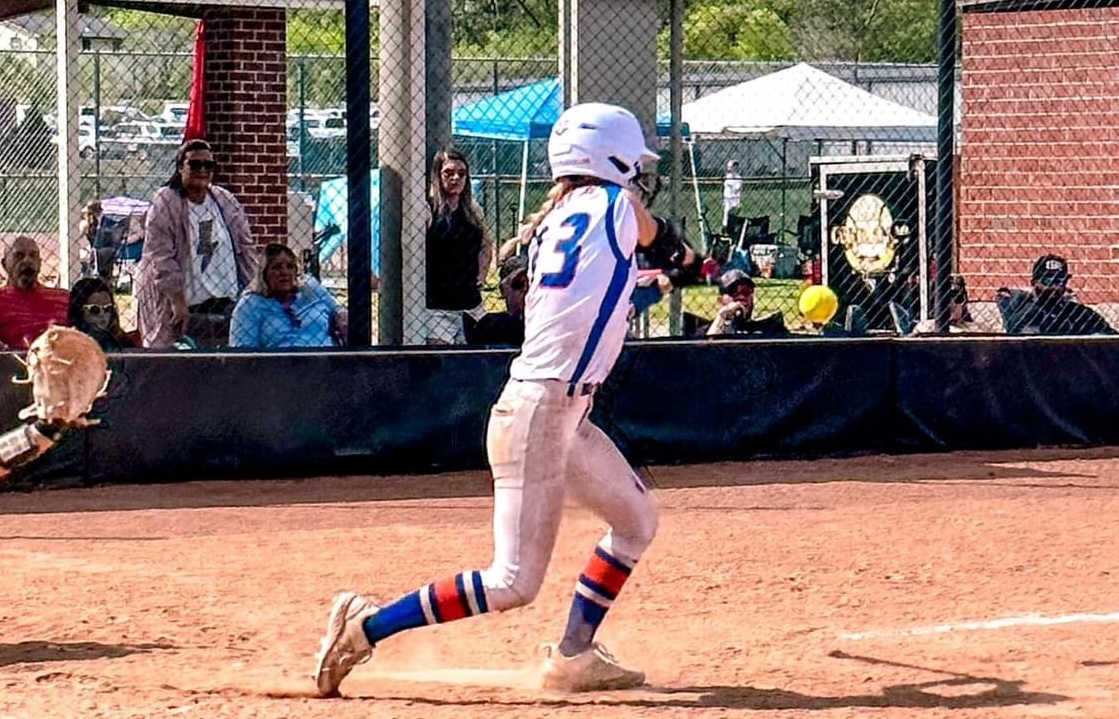
This is Brentt Eads of Line Drive Softball.
On Monday, we launch the latest edition of our player rankings—the 2026 Line Drive HOT 100—following our previous and extensive coverage of the 2027, ’28 and ’29 classes done earlier this year.
Each class will be evaluated and honored until it graduates… note: the Class of 2025 is next (for the final time!)… and, inevitably, some will question the purpose, benefits and impact the rankings will have.
Here are my thoughts on the rankings and, if you’d like to share your opinions, feel free to write me at Brentt.Eads@LineDriveMedia.com.
*****
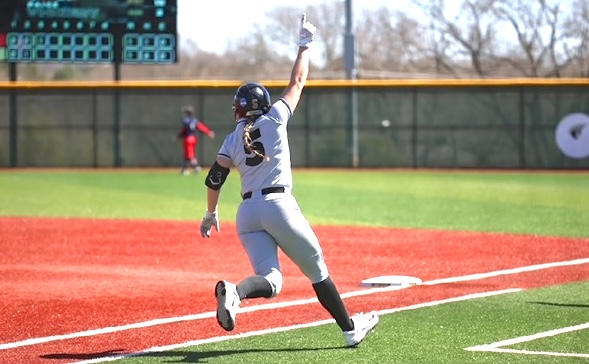
Why Do Softball Rankings in the First Place?
As I’ve discussed before, here are three key reasons the rankings are compiled and produced:
- The primary reason: to honor the athlete.
This is in recognition for all her hard work to get to this point and the projection that they will be impactful in the future at the next level… whatever level that may be.
- Secondly, to inspire the athlete.
We have seen that a third-party company like us recognizing a player as one of the top 100 players in the country for her age—at that particular moment in time— with the positive comments from her coaches and, sometimes, even those who’d played against her, can help the athlete see the success of her efforts and further inspire her to get better and work harder.
- Thirdly, to bring discussion to the sport.
When I worked at ESPN, I was surprised to view the analytics showing that, at least at that time, 98% of all traffic regarding the high school age sports we covered was around recruiting, including the rankings database. Players care and certainly parents, coaches and fans do too.

For the first several years of my career in sports, I worked on the boys’ side of high school athletics. There, I saw how widely used various “rankings” systems were in football, basketball and baseball.
There were the 1-100 lists that I prefer, but also 5-star, 4-star and 3-star systems and many others to publicize players and their potential. They achieved the three benefits above (honoring and inspiring the athlete and bringing attention to their talent and successes).
Player rankings and ratings continue to be huge on the boys’ side of athletics so why shouldn’t girl athletes get the same recognition?
When I came over from the boys’ side and, having four daughters myself, I felt the girls should get every bit of the attention as their male counterparts and—as far as I know—was the first to do softball player rankings for the pre-college ages.
And I feel, more than ever, that it was the right thing to do. I will go to my grave uttering one last phrase: “Rankings are done to honor the kids….”
*****
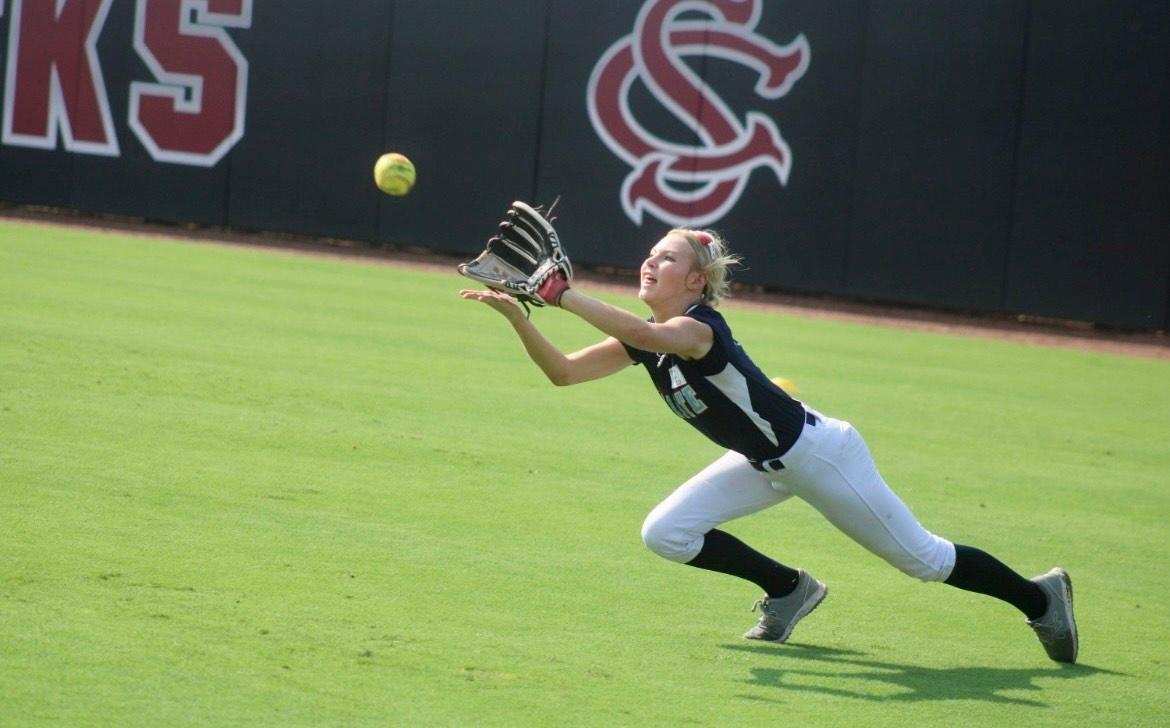
Validity of Rankings
I will be the first to stand up and say that player and team rankings are an inexact science.
Shoot, those paid a lot of dollars in the pro sports world have a hard time nailing draft picks in the NFL, MLB, NHL and NBA so it’s certainly not going to be a sure thing when you’re predicting and projecting the future of teenage athletes!
Remember this: rankings are a journey, not the arrival at a destination.
They are recognition for talent combined with dedication and work ethic. These are the best of the best so why shouldn’t they be honored for it?
When asked why I do rankings, I typically give this answer in fun, but also with a serious point:
“Someday, when these softball players are older and potentially have children and even grandchildren, they can show evidence that they were recognized as one of the best in the country in their sport.”
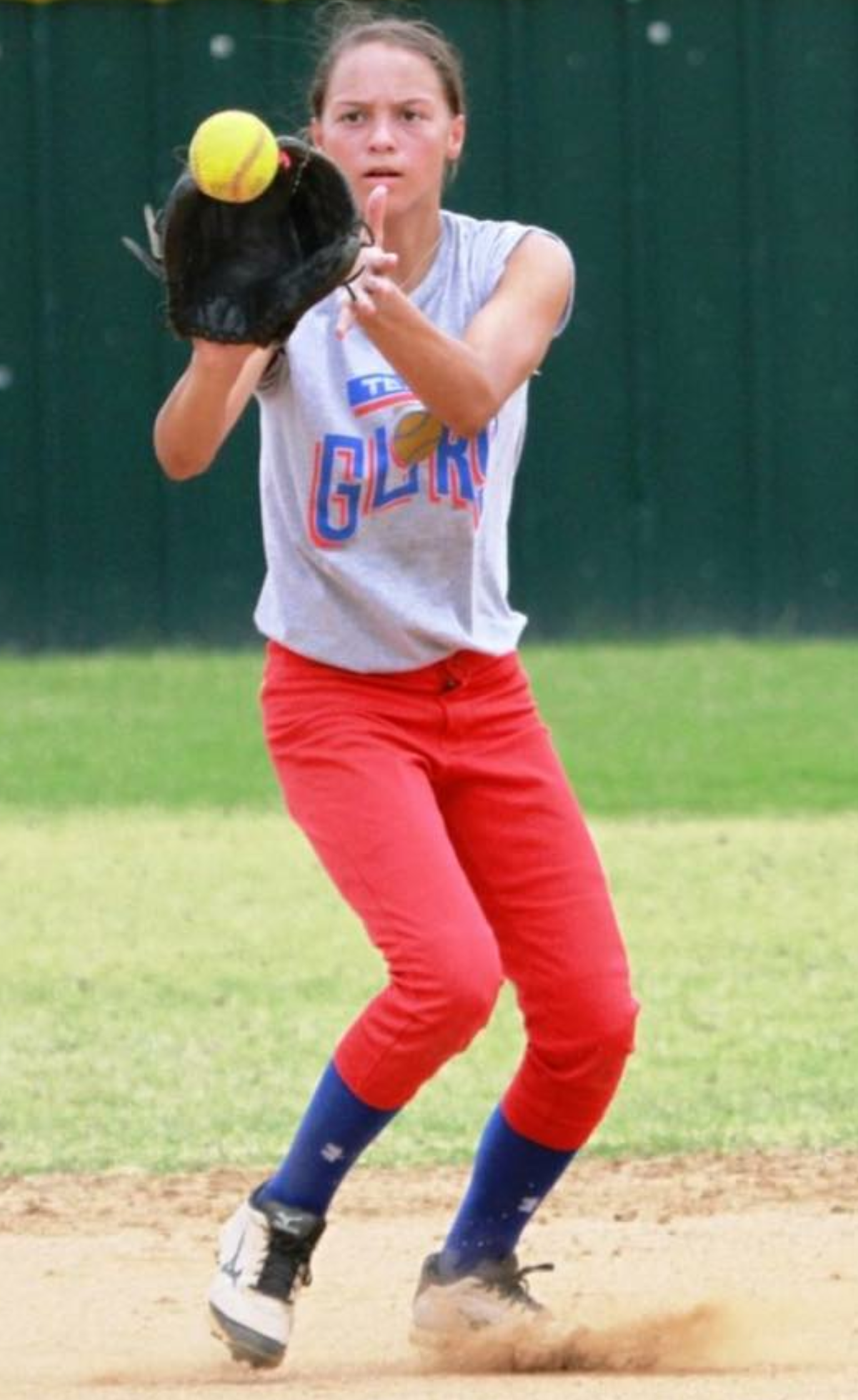
Player development and progressions are going to change over time, in each class. It’s all about monitoring how the athletes grow and continue to elevate their skills and abilities as they move to graduation… and hopefully beyond.
Inevitably, rising prospects will emerge and rise in stature, others will drop, and some even quit the sport. It’s an organic, ever-changing, and evolving journey—just like life.
I can only remember one player who was ranked No. 1 from start to finish and that was Jayda Coleman, the outstanding athlete from the Texas Glory program who, like a few others on Patty Gasso’s Oklahoma Sooners 2024 team including Nicole May, Tiare Jennings and Kinzie Hansen, won an unprecedented four straight NCAA Softball National Championships.
And, for what it’s worth, May, Jennings and Hansen were also Top 10-ranked players so sometimes the rankings do get it somewhat close!
*****
Do the Rankings Create Undo Pressure on Athletes?
My experience is, to be blunt, no.
These are super competitive athletes and they are well-aware that winning AND losing is part of the game… and part of life. If anyone does feel pressure, it might be the parents but they too will be alright!
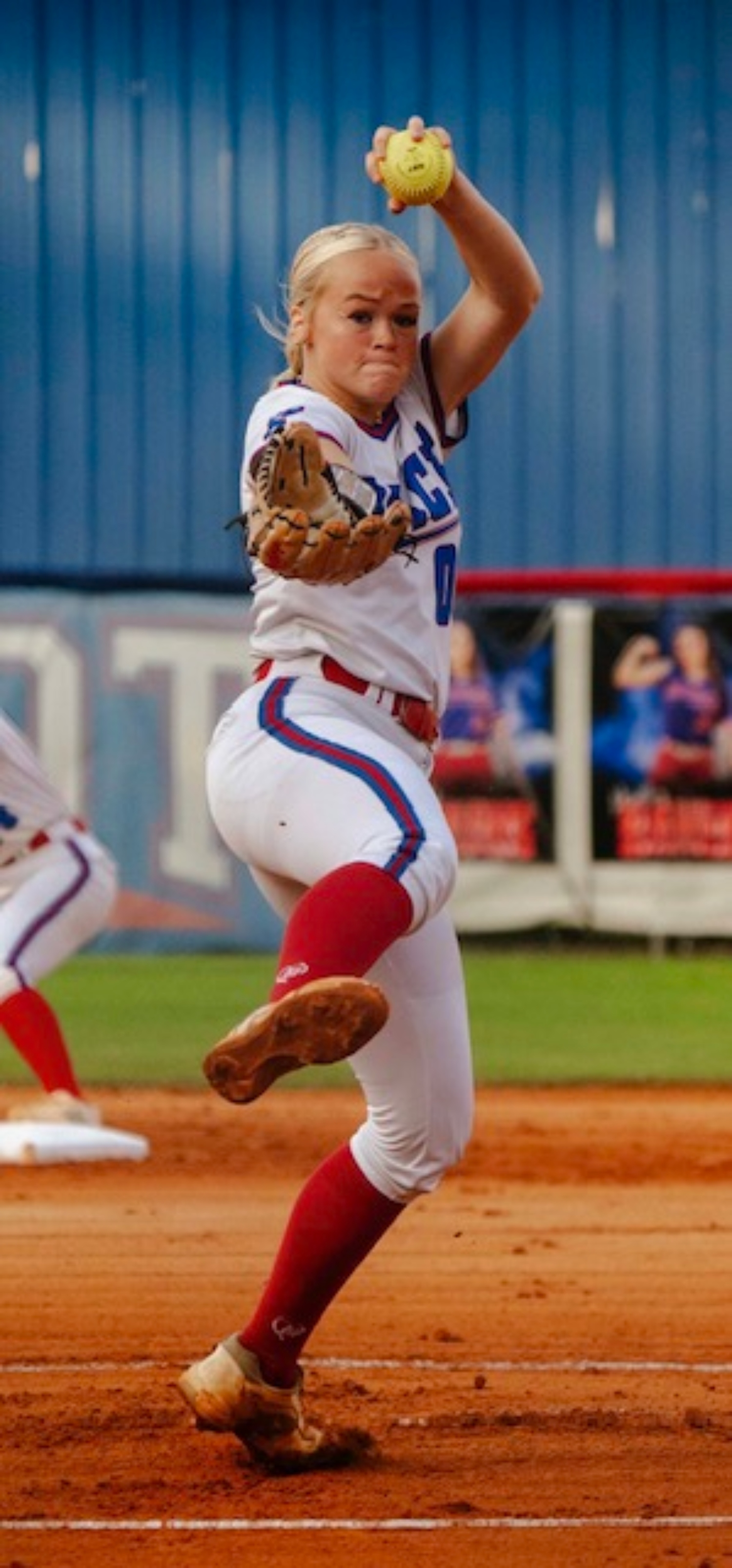
Pressure is standing at the plate with a full count, two outs, down by a run and a runner at second. Pressure is preparing for and taking the SAT or ACT test knowing that it will impact your future.
Being ranked No. 46 in a list of the top softball players in your class isn’t, or shouldn’t be, undue pressure. It should be a positive thing… a reward.
I talked to a mental health counselor a year or two ago who gave some great advice:
“There are several psychological strategies that can be employed to ensure that praise and recognition are beneficial for a young athlete’s mental health,” he said.
“These include:
- providing specific, descriptive praise that acknowledges effort and progress,
- balancing praise with constructive feedback,
- encouraging autonomy and self-evaluation,
- avoiding overpraising, and
- being mindful of the type and frequency of praise given.”
“Ultimately, it is essential for parents to remain attuned to the unique needs and circumstances of their child and to act in their best interest in order to promote positive mental health outcomes.”
*****
Why Do Ties?
I love this one… I occasionally hear sniping that doing ties in a 1-to-100 list is wrong because it lessens the impact or invalidates the significance of the honor by having more athletes recognized than 100.
Having more than 100 in a list… my response:
“And that’s bad… why?”
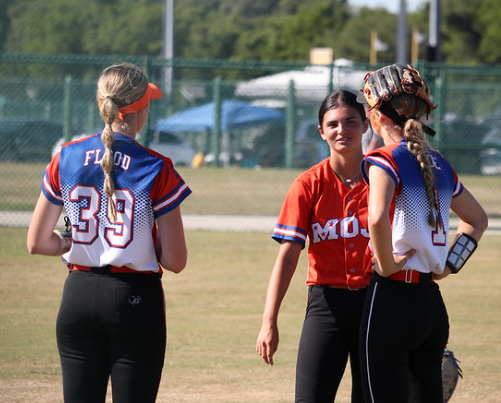
This isn’t brain surgery and it’s not meant to be a recruiting tool or a scouting service.
There are platforms for that and, as most college coaches will tell you, rankings such as ours are a resource but they have to ultimately view the athlete and decide for themselves if she is a fit for the program.
Line Drive Softball is a media company and I equate the rankings to a credible outlet such as, say, the Dallas Morning News doing a football All-State team. Is someone going to have an issue if such a team has four running backs over three? Or two?
Ties are done to honor more kids… period. It’s a heck of a lot more work for us but knowing an athlete is rewarded and recognized is worth it.
Final point here: in the 5-star rankings systems, how many players make that upper echelon? Is it five? 15? 30?
Ultimately, who cares?!? It’s a RANGE! How cool is it to say: “I am considering a Top 25 (or 50 or 100) player in my graduating class!”
Or to be Top 100 in anything in life?!?
It’s pointing out the best of the best and, if you’re in the Top 100 no matter the ranking and no matter if there’s one or two others at that level, you’re ONE OF THE BEST IN YOUR SPORT FOR YOUR AGE LEVEL!
*****
Why Rank Players When They’re Younger?
Typically, a rankings class will begin when an athlete is in the 7th grade and people frequently ask:
“Why start at that age in the first place?”
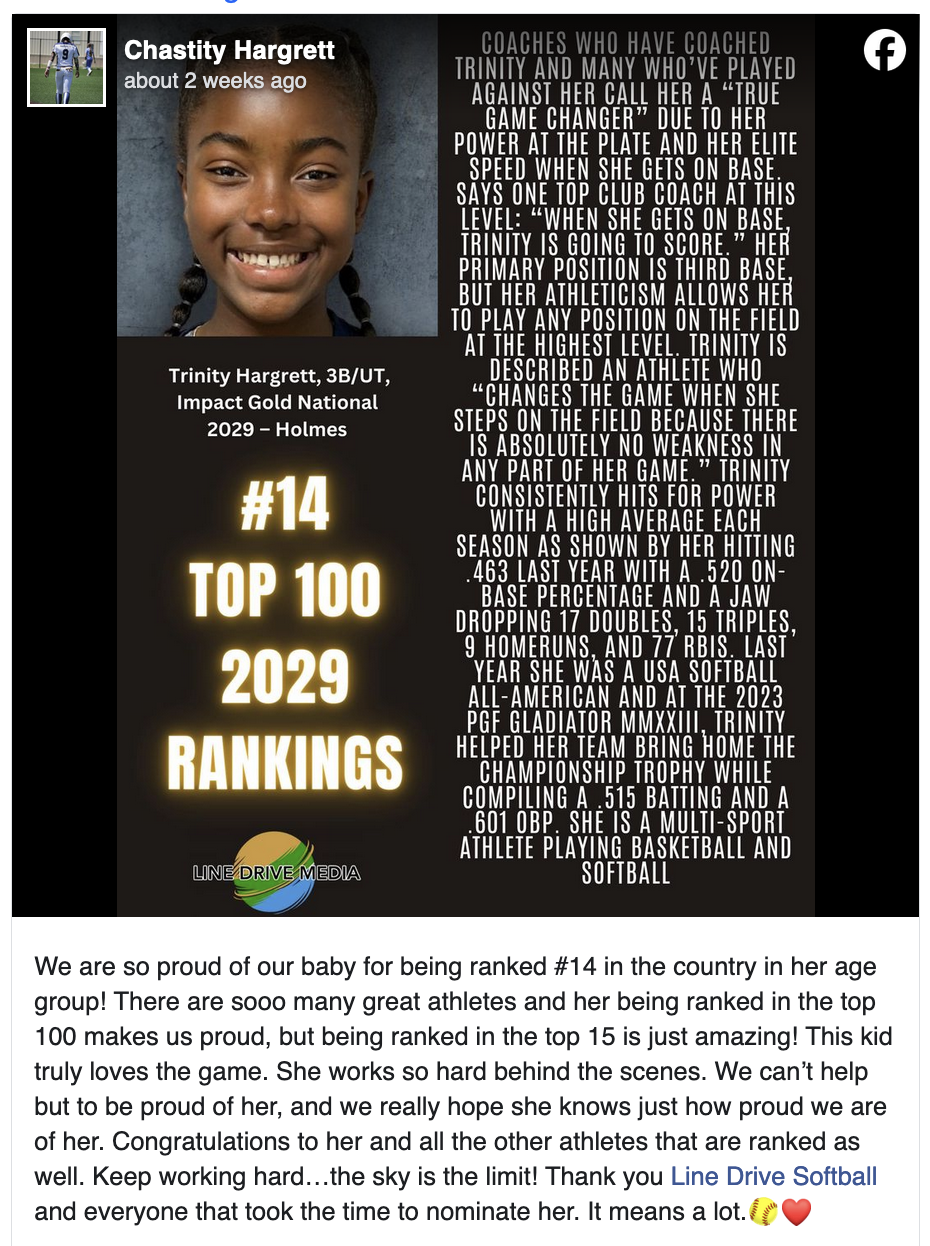
One key reason is we saw that age point as where the separation of those players into wanting to pursue softball as their sport begins to develop more clearly, especially as they compete on club teams with the hope of playing at the collegiate level someday.
Players are being more dedicated to the sport via hours and hours spent in lessons, workouts, practices, showcases, camps, tournaments and travel all over the country to compete against other top players their age.
They are focusing the bulk of their non-scholastic energies on being the best fastpitch player they can be and do appreciate the positive feedback of those who have noticed their dedication to the game.
You see travel ball national championships and major tourneys at the club level starting as young as 10U and going up through 12U, 14U, 16U and 18U. Additionally, elite players in these younger classes are playing up as high as 16U, even 18U, based on nominations that have been sent in.
Additionally, college coaches ARE starting to track kids as young as this—they’ll invite them to their on-campus camps, certainly—and will be aware of their progress and growth in the years prior to them being able to be openly recruited.
Honestly, a key reason for beginning at this age is that we have received feedback from the softball market over the years that this is a good starting point to recognize these athletes as some of the best in their classes and that those who have been awarded as a HOT 100 honoree feel rewarded for being one of the best and seeing their hard work acknowledged.
*****
The Ultimate Reason for Player Rankings
Finally, remember this final statement as to why Line Drive Softball does the player rankings: it’s done because of the positive publicity and recognition it brings to these great young athletes who give their all on their journey to become the best they can be.
Those we don’t want to be part of it have that right and–though we may agree to disagree as to what age is appropriate to start, the tie system and if rankings do inspire and motivate players and those close to them–we’ll continue to honor them with the understanding that we’re willing to make changes needed to better the process and listen to those who have concerns.
— Brentt Eads/Line Drive Softball
MORE
ARTICLES
GET THE LATEST UPDATES
Subscribe To Our Weekly Newsletter
Sign up to receive immediate, daily, or weekly news updates!



